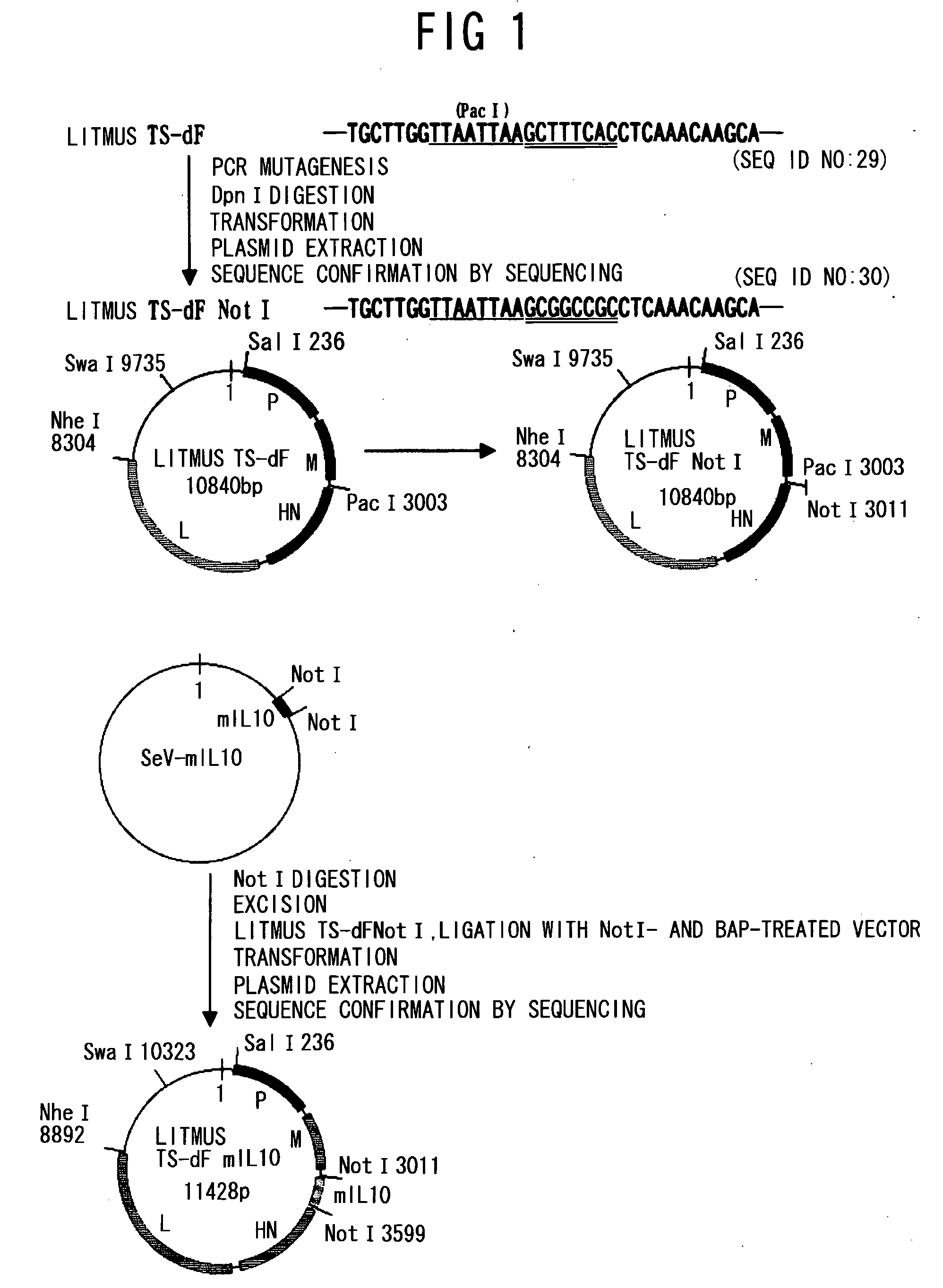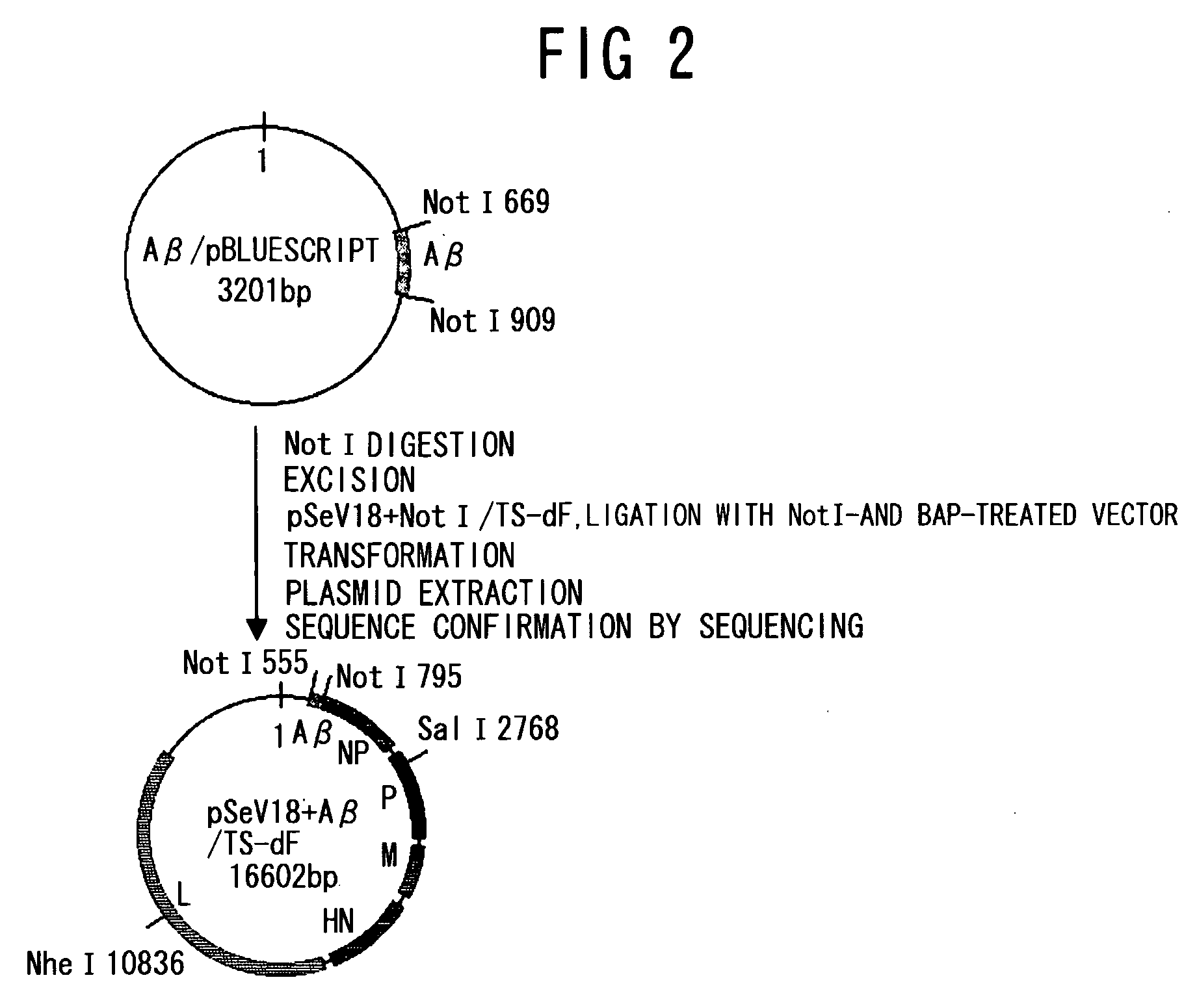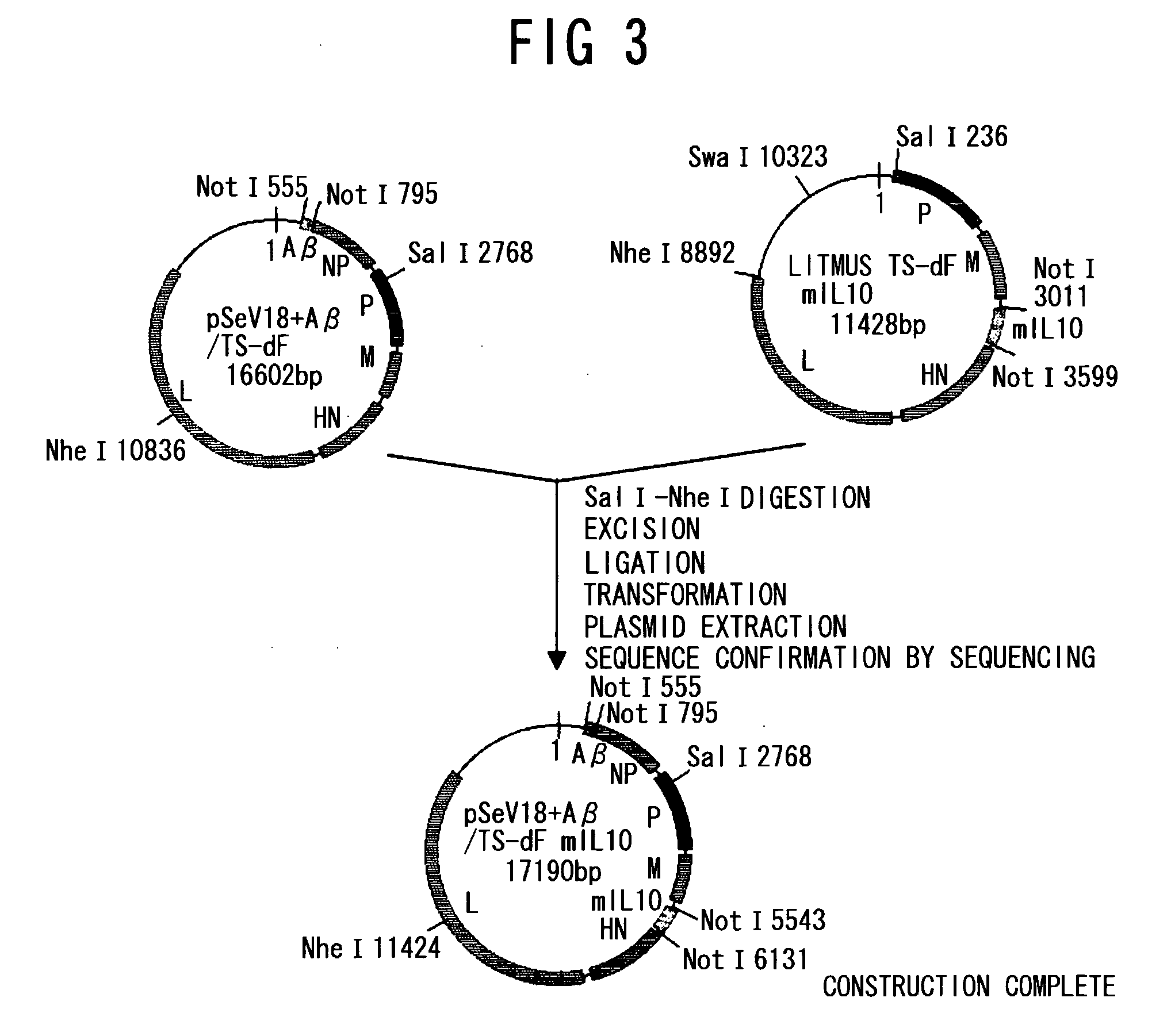Highly safe intranasally administrable gene vaccines for treating alzheimer's disease
- Summary
- Abstract
- Description
- Claims
- Application Information
AI Technical Summary
Benefits of technology
Problems solved by technology
Method used
Image
Examples
example 1
Construction of a Minus Strand RNA Viral Genome cDNA Carrying an AβGene
(1-1) Construction of NotI Fragment (Addition of a Transcription Signal of a Minus Strand RNA Virus)
[0120]PCR was performed using as a template, a gene (JP-A No. 2005-21149; SEQ ID NO: 1) encoding an Aβ peptide (SEQ ID NO: 28) which has been made into a secretory type by adding the secretion signal (amino acids 1 to 18) of an amyloid precursor protein (APP: Accession number AF282245) to a human Aβ peptide 1-43 (SEQ ID NO: 27), and two primers, phAbeta-NnotI (SEQ ID NO: 19) and phAbeta-CnotI (SEQ ID NO: 20). The resulting PCR products were digested with NotI, and then subcloned into pBluescript™ II KS (Stratagene) to construct a NotI fragment of the Aβ peptide gene comprising a Sendai virus transcription signal (SEQ ID NO: 21). Similarly, for mouse IL-10 (mIL10), PCR was performed using mIL10 cDNA (Accession number NM—010548; SEQ ID NO: 2) as a template, and two primers pmIL10-N (SEQ ID NO: 22) and pmIL10-C (SEQ I...
example 2
Reconstruction and Amplification of Sendai Virus Vector
[0124]Viral reconstruction and amplification were carried out with the method reported by Li et al. (Li, H.-O. et al., J. Virology 74: 6564-6569, 2000; WO 00 / 70070) and its modified method (PCT / JP2005 / 00705). Since the viral vector is F gene-defective, a helper cell for supplying F protein was used. The helper cells were prepared using a Cre / loxP induced expression system. The system uses a plasmid pCALNdLw (Arai, T. et al., J. Virol. 72: 1115-1121, 1988), which is designed to induce expression of gene products by Cre DNA recombinase, and a recombinant adenovirus (AxCANCre) expressing Cre DNA recombinase to infect the transformant, which has been transformed with the pCALNdLw plasmid, according to the method of Saito et al. (Saito, I. et al., Nucl. Acid Res. 23: 3816-3821, 1995; Arai, T. et al., J. Virol. 72: 1115-1121, 1998).
[0125]The F gene-defective SeV vector carrying an Aβ gene (SeV18+Aβ / TSΔF) and the F gene-defective SeV v...
example 3
Effect of Intranasally Administered SeV-Aβ1-43 / mIL10 in an Alzheimer's Disease Animal Model
(3-1) Animals and Method of Administration
[0126]Effect of SeV18+Aβ / TSΔF-mIL10 of the present invention (hereinafter also referred to as “SeV-Aβ1-43 / mIL-10”) was tested using 24- to 25-month-old APP transgenic mice (Tg2576) (Hsiao, K., et al., Science 274:99-102, 1996). The mice were divided into two groups, the treatment group and control group, each consisting of four mice. SeV-Aβ1-43 / mIL-10 (5×106 CIU / head) was administered intranasally to the treatment group, and SeV LacZ (5×106CIU / head) was administered intranasally to the control group.
(3-2) Determination of Anti-Aβ Antibody in Serum
[0127]Blood was collected from the mice 4 and 8 weeks after the above-described treatment to determine the amount of anti-Aβ42 antibody present in serum. Aft 1-42 peptide (5 μg / mL) was adsorbed onto each well of a 96-well plate (Nunc, MaxiSorp). After blocking with 5% nonfat milk / TBS-T buffer, the mouse serum ...
PUM
| Property | Measurement | Unit |
|---|---|---|
| Cell angle | aaaaa | aaaaa |
| Pharmaceutically acceptable | aaaaa | aaaaa |
Abstract
Description
Claims
Application Information
 Login to View More
Login to View More - R&D
- Intellectual Property
- Life Sciences
- Materials
- Tech Scout
- Unparalleled Data Quality
- Higher Quality Content
- 60% Fewer Hallucinations
Browse by: Latest US Patents, China's latest patents, Technical Efficacy Thesaurus, Application Domain, Technology Topic, Popular Technical Reports.
© 2025 PatSnap. All rights reserved.Legal|Privacy policy|Modern Slavery Act Transparency Statement|Sitemap|About US| Contact US: help@patsnap.com



